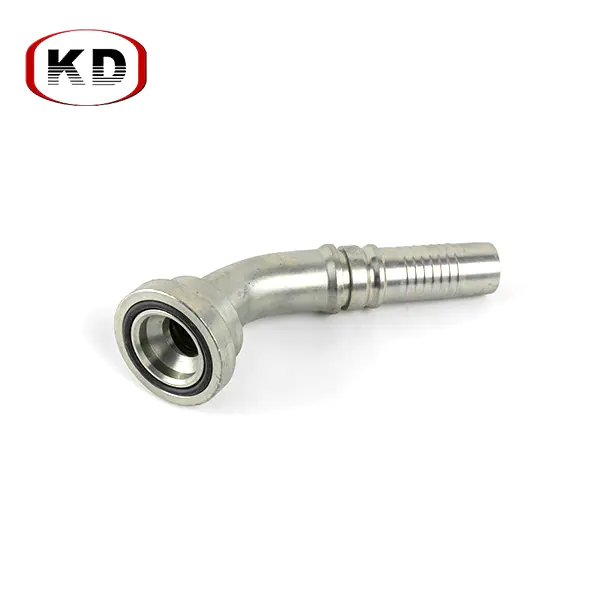Many years of foreign trade experience.
Strong production capacity, and massive stock to make sure the delivery time.
ISO quality process to make sure every piece qualifies.
One-to-one service, OEM service, provides alternative efficient solutions.

 By Admin
By Admin
Increased Operational Efficiency: By reducing the weight of the hose fittings, the overall system requires less energy to operate. This is especially beneficial in applications such as aerospace, automotive, and heavy machinery, where energy consumption directly affects performance. Lighter components contribute to reduced fuel usage or lower power demands, enhancing operational efficiency and lowering operational costs. In dynamic systems, this translates into smoother, quicker responses due to the lower inertia of the system, improving the speed and precision of performance.
Easier Handling and Installation: Lightweight swage hose fittings are easier to handle, simplifying the installation process. In industries such as construction, maintenance, and repair, where downtime needs to be minimized, faster and simpler installation can lead to significant savings in labor costs and reduced system downtime. The reduced physical strain on technicians and workers during installation promotes better ergonomics, decreasing the likelihood of installation errors or injuries and increasing overall productivity.
Reduced Mechanical Stress on System Components: The lighter mass of swage hose fittings decreases the mechanical load on connected components, such as hoses, pumps, and structural support systems. This reduction in stress minimizes wear and tear, leading to extended service life for both the fittings and the surrounding components. In high-pressure or high-vibration environments, such as in hydraulic systems, this can significantly reduce the risk of premature failure, improving system longevity and reliability.
Improved Mobility and Flexibility: Systems that require frequent movement, such as in robotics, mobile equipment, or portable machinery, benefit greatly from lighter hose fittings. Reduced weight enhances the system’s overall flexibility and mobility, making it more responsive to adjustments and better suited for high-maneuverability applications. This is crucial in industries like manufacturing, logistics, and robotics, where agility and precision are key to operational success.
Vibration and Shock Reduction: The lighter fittings contribute to overall system stability by reducing vibration and mechanical shocks, particularly in dynamic or high-speed environments. Excessive vibration can lead to component loosening, material fatigue, or system instability, ultimately causing operational failures. By lowering the weight, the vibration load on the system is minimized, ensuring tighter, more secure connections, and improving system resilience in high-demand applications.
Enhanced Safety and Reliability: In high-pressure environments such as oil and gas, chemical processing, or heavy industrial applications, the weight reduction of swage hose fittings lowers the overall strain on system components, reducing the likelihood of mechanical failures. Lighter fittings can mitigate the risks associated with excessive load and stress, contributing to a safer operating environment. The decreased risk of material fatigue or connection failures improves system reliability, ensuring that critical operations continue without unexpected interruptions or hazardous failures.